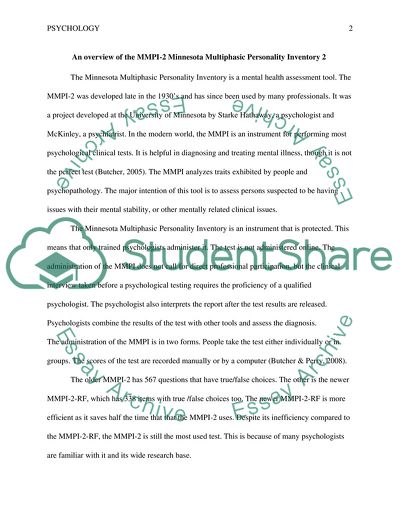Cite this document
(The MMPI-2 Minnesota Multiphasic Personality Inventory Report Example | Topics and Well Written Essays - 1250 words, n.d.)
The MMPI-2 Minnesota Multiphasic Personality Inventory Report Example | Topics and Well Written Essays - 1250 words. https://studentshare.org/psychology/1863425-an-overview-of-the-mmpi-2-minnesota-multiphasic-personality-inventory-2
The MMPI-2 Minnesota Multiphasic Personality Inventory Report Example | Topics and Well Written Essays - 1250 words. https://studentshare.org/psychology/1863425-an-overview-of-the-mmpi-2-minnesota-multiphasic-personality-inventory-2
(The MMPI-2 Minnesota Multiphasic Personality Inventory Report Example | Topics and Well Written Essays - 1250 Words)
The MMPI-2 Minnesota Multiphasic Personality Inventory Report Example | Topics and Well Written Essays - 1250 Words. https://studentshare.org/psychology/1863425-an-overview-of-the-mmpi-2-minnesota-multiphasic-personality-inventory-2.
The MMPI-2 Minnesota Multiphasic Personality Inventory Report Example | Topics and Well Written Essays - 1250 Words. https://studentshare.org/psychology/1863425-an-overview-of-the-mmpi-2-minnesota-multiphasic-personality-inventory-2.
“The MMPI-2 Minnesota Multiphasic Personality Inventory Report Example | Topics and Well Written Essays - 1250 Words”. https://studentshare.org/psychology/1863425-an-overview-of-the-mmpi-2-minnesota-multiphasic-personality-inventory-2.


